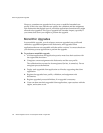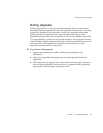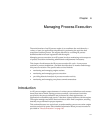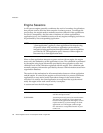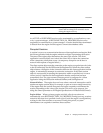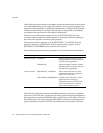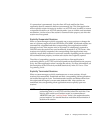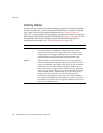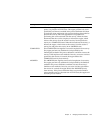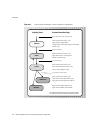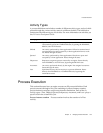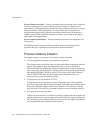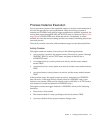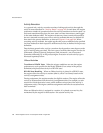
Introduction
162 iPlanet Integration Server • Process System Guide • August 2001
Activity States
During process execution the engine manages a succession of activities through a
number of states, from creation to deletion. While there are a number of activity
types, each with its own properties and behavior (see “Activity Types” on
page 165), as a general rule, the engine takes each activity through a succession of
states shown in the following table and illustrated in Figure 6-1 on page 164. (For
more detailed information on engine operations within each state and on
transitions between states, see “Activity Execution” on page 168.)
Activity state Description
PENDING An activity is normally created and placed in PENDING state when
the router method of a completed (or aborted) activity or of an
expired timer names the new activity. The activity remains in the
pending state until all trigger conditions are met, at which time the
engine performs any work specified by a Ready method in the
process definition and then places the activity in READY state.
READY When an activity is placed in READY state, it is made available to
client sessions based on assignment rules specified for the activity in
the process definition. Depending on the type of activity, the engine
either offers it to each session whose user profile matches one or
more of the activity’s assignment rules (offered activity), places the
activity in a queue (queued activity), or places it directly in ACTIVE
state (automatic activity). When offered to a session, the activity is
placed on the session’s activity list (a list of offered activities
maintained by the engine for each session) and is then available to
the session’s client application. When placed in a queue, the activity
is available to any session whose user profile matches one or more of
the activity’s assignment rules.



